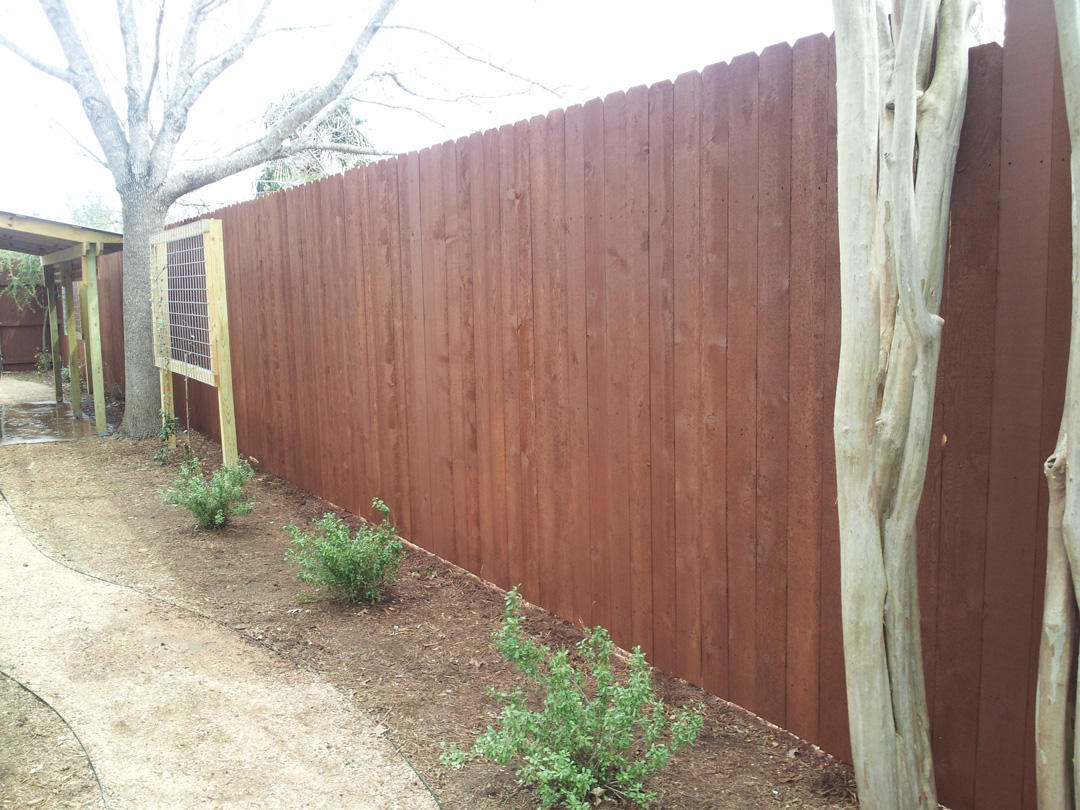Expert Fence Staining Service: Protect and Beautify Your Building!
Wiki Article
The Ultimate Overview to Fencing Staining: Tips and Techniques You Need to Know
In the world of home upkeep, fencing discoloration commonly arises as a job that calls for attention yet is often overlooked. The process includes greater than simply slapping on a coat of discolor; it demands precision, understanding, and the best techniques to make sure a durable and aesthetically enticing outcome. Whether you are an experienced DIY fanatic or a homeowner looking to improve the aesthetic appeal of your residential or commercial property, recognizing the nuances of fence staining can make a significant distinction. Allow's check out the details of this seemingly straightforward yet remarkably complicated task to unlock the keys that can transform your fencing from a plain boundary to a standout feature of your exterior area.Benefits of Fencing Staining
What advantages does fencing staining offer to homeowners looking for to enhance both the look and long life of their outside structures? Fence discoloration offers many benefits that make it a prominent selection for homeowners looking to protect and beautify their fences.Additionally, fencing discoloration assists to protect the wood from the elements, such as rain, snow, and UV rays. This defense not only prevents the timber from deteriorating and rotting yet likewise expands its lifespan, saving house owners money on pricey repair work or substitutes over time. Fence Staining. In addition, tarnishing produces a barrier versus insects, such as termites and woodworker ants, which can cause significant damages to unattended wood fencings
Choosing the Right Discoloration

One more aspect to consider is the degree of protection you prefer for your fence. Transparent discolorations offer marginal protection versus UV rays and moisture, while wikipedia reference semi-transparent and solid discolorations supply increased security. If your fencing is subjected to harsh climate condition, a strong tarnish may be the very best option to ensure optimum resilience.

Preparing Your Fence
Before using the chosen tarnish, complete preparation of the fencing surface area is necessary to make certain optimal outcomes. Begin by cleaning up the fence to eliminate dust, debris, and any old stain or repaint. Use a pressure washing machine or a tight brush with a cleansing remedy to scrub the surface area thoroughly (Fence Staining Nashville). Enable the fence to completely dry entirely prior to continuing. Next, evaluate the fencing for any signs of damages such as cracks, splinters, or loosened boards. Make needed repair services to guarantee the fencing is structurally audio.
After cleaning and repairing, it is vital to sand the fencing to develop a smooth surface area for the stain to stick to. Use a medium-grit sandpaper to remove any type of harsh patches or imperfections. Clean down the fence with a tack towel to get rid of any kind of remaining dust bits.
Applying the Stain

When applying the tarnish, work methodically area by area, starting from the top and moving downwards to avoid drips and guarantee even coverage. Usage long, smooth strokes to use the discolor in the instructions of the wood grain, permitting for much better penetration and a much more expert surface.
Keeping Your Stained Fence
To ensure the longevity and aesthetic allure of your discolored fence, routine upkeep is essential. Additionally, it is important to keep an eye on the sealer on your stained fencing and reapply it as required to shield the wood from moisture and UV damage. By adhering to these maintenance pointers, you can make sure that your discolored fencing stays in leading problem for years to come.Conclusion
Finally, fencing discoloration offers numerous advantages such as security against weathering and enhancing the visual charm of your building. By picking the best tarnish, effectively preparing your fencing, using the stain appropriately, and maintaining it frequently, you can guarantee your fencing continues to be in top condition for many years ahead. Adhering to these tips and techniques will help you achieve a magnificently tarnished fencing that will stand the examination of time.Report this wiki page